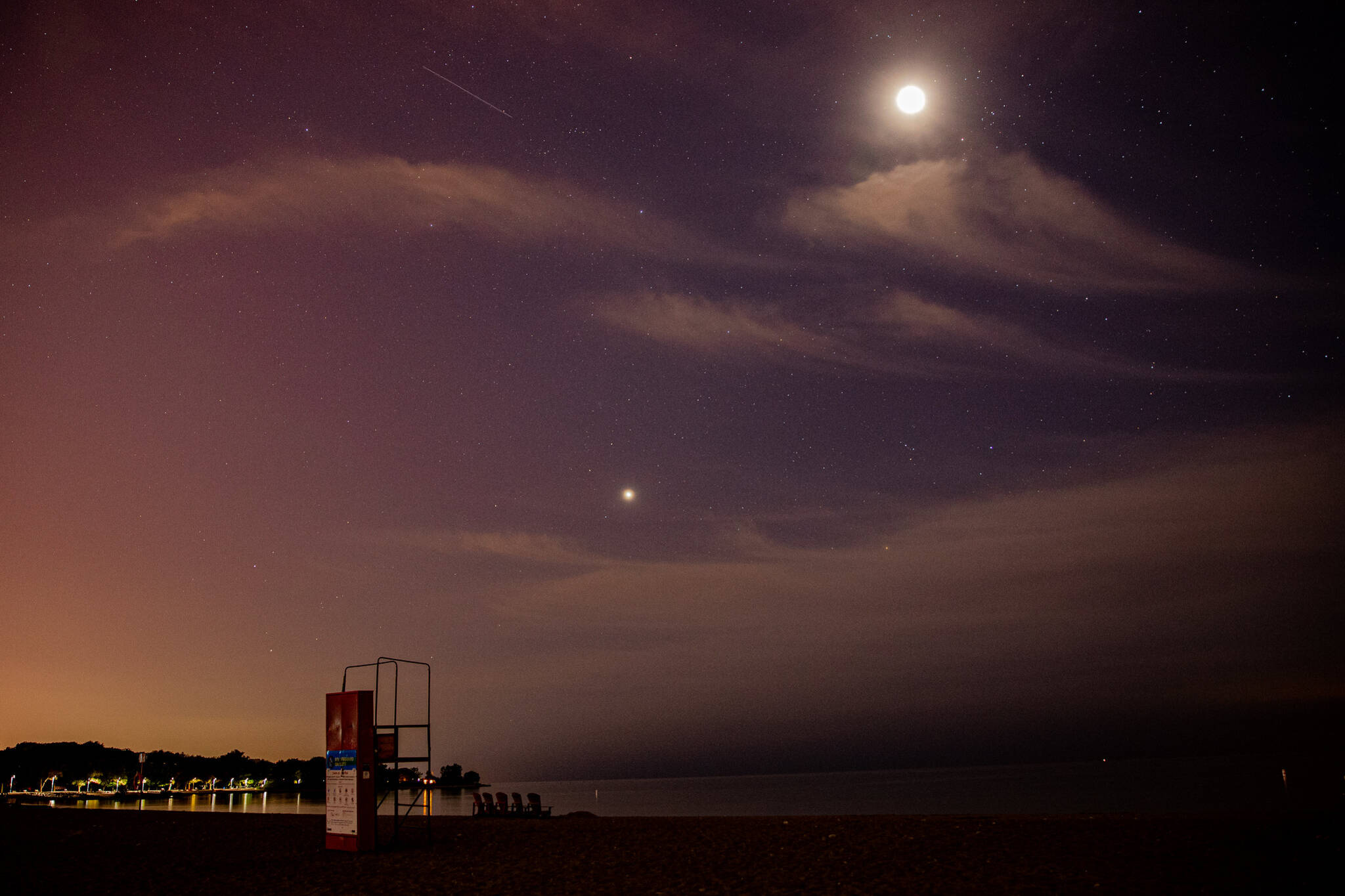
The Orionid meteor shower is peaking but you might want to leave Toronto to watch it
Fragments of a comet are raining down on the planet as the Orionid meteor shower is set to reach its peak at 2 a.m. on Wednesday morning. But how visible will the annual phenomenon be over the light-polluted skies of Toronto?
The result of fragments breaking off of Halley's Comet and crossing paths with the Earth's orbit, Orionids lasts from about October 2 until November 7, but the best chance to catch the light show is right at the now-imminent peak.
While the Orionid event is expected to be visible from points across the world, it turns out it won't be quite as easy to see with the naked eye as past meteor showers, this year's barrage of shooting stars coinciding with a blindingly bright full moon and an uncertain weather forecast.
Factor in the dense light pollution cast into the atmosphere by the over nine million residents that call the Greater Golden Horseshoe region home, and Toronto might just be in for another featureless purple-hued sky.
The more ambient light, the more difficult these glowing specks in the sky are to spot.
If that wasn't enough of a deterrent, what's already shaping up to be a tricky event to watch might become downright impossible with a chance of rain in the forecast that would obscure the night sky with clouds.
Even if the weather cooperates, those who trek far outside the city to skywatching destinations like the two-hour drive to Torrance Barrens Dark Sky Preserve might be disappointed by the show, with experts predicting rates of only about 20 meteors visible per hour.
During better years with more favourable conditions, skywatchers have been treated to as many as 80 meteors per hour.
NASA meteor expert Bill Cooke put it rather bluntly to Space.com, telling the outlet, "The Orionids are going to, frankly, suck this year ... the moon will be up all night, from sunset to sunrise."
In contrast, the much more popular Perseids meteor shower lit up the sky on average once per minute this past summer.
Skywatchers are being instructed to look towards the Orion constellation around 2 a.m., though experts have been careful not to make any guarantees.
Even in favourable conditions, meteors can be hard to spot, tearing across the sky at insanely fast speeds. At an Orionids meteor's top speed of 238,000 km/hr, or 66 km per second, you could fly from Toronto to Los Angeles in under one minute.
But good luck landing.
Latest Videos
Latest Videos
Join the conversation Load comments







